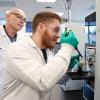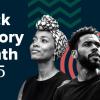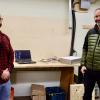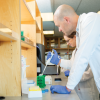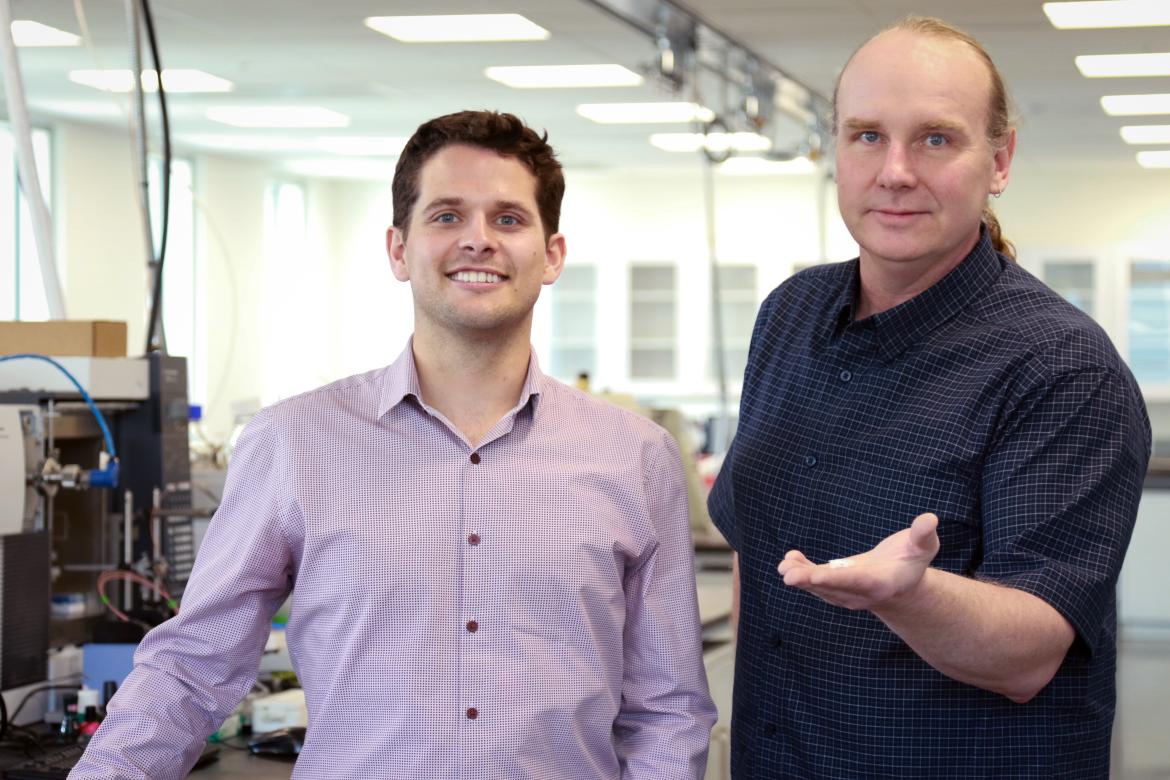
PhD Candidate Scott Borden and Dr. Chris Gill, Co-Director AERL
April 25, 2019 - 2:30pm
VIU researchers developing a breakthrough opioid drug testing system using new equipment provided by Thermo Fisher Scientific – were declared semi-finalists in Health Canada’s Drug Checking Technology Challenge.
Researchers at Vancouver Island University (VIU) developing a drug-testing system that could one day save lives are getting some much-needed help from Health Canada and a leading scientific instrument developer.
Led by Dr. Chris Gill, a VIU Chemistry professor and Co-Director of the Applied Environmental Research Laboratories (AERL), the team of researchers has developed a system which checks for toxic substances, such as fentanyl or carfentanil. Overcoming key limitations of existing drug tests for toxic substances, the technology delivers immediate, accurate details on the presence and quantity of even tiny amounts of potentially deadly opioids and other drugs.
The success of the method, which has been conducted in partnership with LifeLabs and Island Health and in consultation with the BC Centre on Substance Use, has earned the team a $25,000 semi-finalist prize from the Health Canada’s Drug-Checking Technology Challenge.
“It doesn’t do any good to say your drug is tainted with fentanyl or carfentanil or another drug. What you really need to know is whether there are dangerous amounts present,” says Gill. “Effective harm reduction drug checking needs to quickly and accurately provide the client with information so they can make an informed decision before use.”
According to Impact Canada, in a pilot drug checking program conducted by Insite in Vancouver, BC, they observed that when people knew their illegal drugs contained fentanyl, they were 10 times more likely to reduce the dose. The government of Canada initiative challenges innovators to generate ground-breaking solutions to some of the biggest issues facing Canadians and their communities.
The full research project requires more than $500,000 in funding – which the AERL team members have been actively seeking – as well as unique expertise and support. The research team has more than 15 years’ experience in developing and successfully implementing mobilized mass spectrometry systems for direct environmental measurements in the field.
“To move the research project forward, I have been seeking collaborations with instrument manufacturing companies to help us radically reduce the size of the instrumentation, further simplify its operation, and get it into wider use in community based testing sites or even in mobile harm-reduction units,” explains Gill, adding that mobile harm reduction units would be a significant step towards reaching drug users not currently accessing overdose prevention sites and services.
Thermo Fisher Scientific is loaning Gill and the AERL its newly developed, high-throughput direct sampling system, the Thermo Scientific™ VeriSprayTM PaperSpray ion source unit and associated mass spectrometer. The loan will allow Gill and his colleagues to further refine their drug testing method which is crucial for success in Stage 2 of the Health Canada Challenge (a $100,000 prize). The final stage of the challenge awards the successful recipient $1 million for their research. 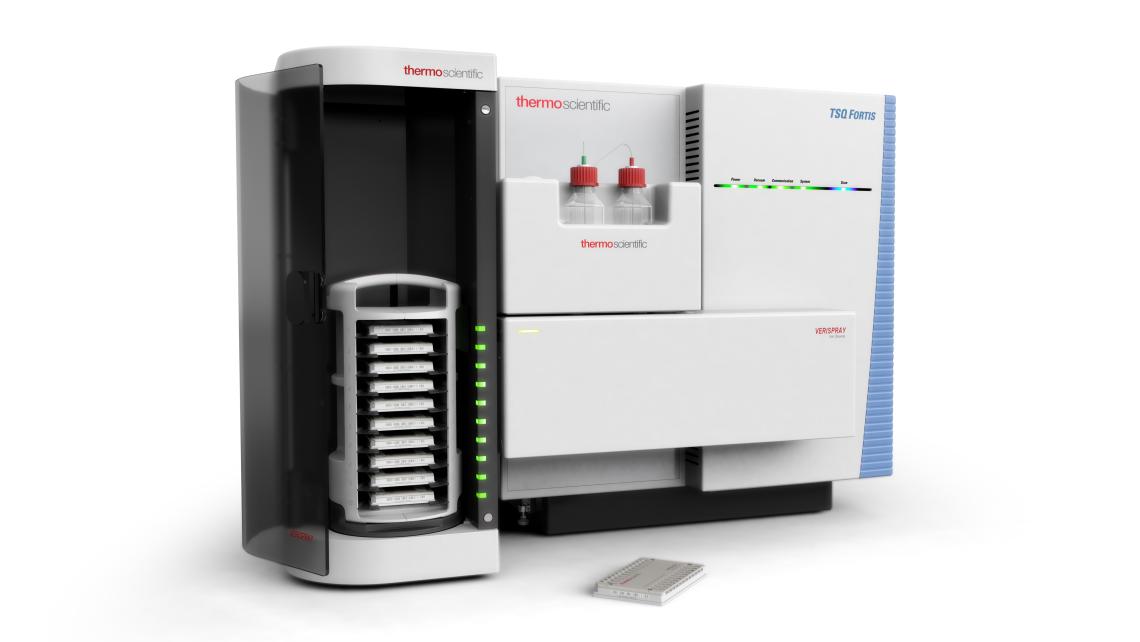
“We are extremely grateful for the instrumental support from Thermo Fisher Scientific,” says Gill. “They are providing the necessary cutting-edge technology to allow us to develop simple paper spray mass spectrometry (PS-MS) methods in our research, crucial for our development of rapid harm reduction drug testing methods.”
The next hurdle for the AERL team will be to secure additional funding to cover the cost of hiring a postdoctoral researcher to help take the project to the next level and be ready to demonstrate their success at stage 2 of the challenge this September.
“With the necessary funding, I am confident we can adapt this tool to a smaller system, making it portable,” says Gill. “This system is also adaptable. We are facing a fentanyl crisis in Canada and the United States right now, and we don’t know what the next opioid or other drug threat is going to be on the street. Our method is easily adapted to measure new substances as they appear in drugs, and ultimately help people who use them make better decisions or change their drug use.”
-30-
MEDIA CONTACT:
Annette Lucas, Communications Officer, Vancouver Island University
O: 250.741.2020 | C: 250.618.7296 | E: Communications@viu.ca
Tags: AERL | Research | Science & Technology | Research


